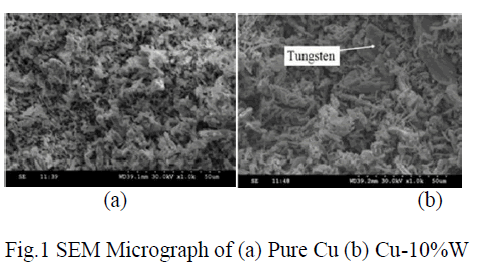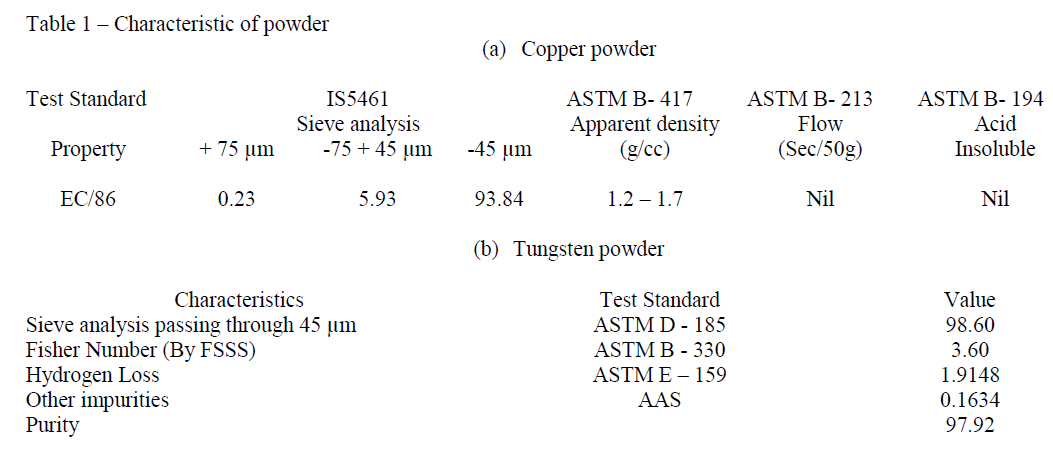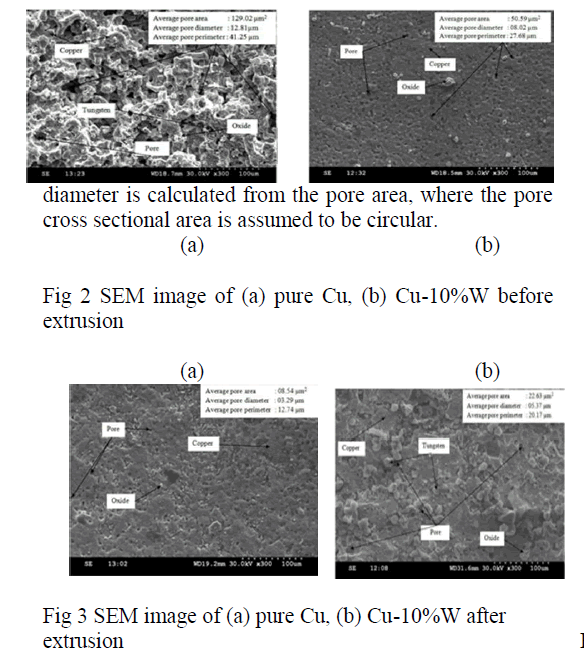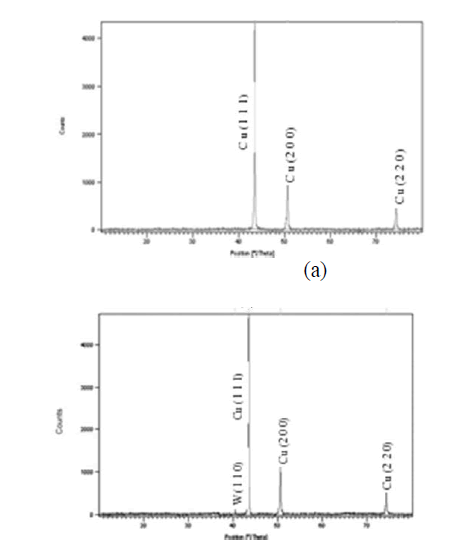ISSN ONLINE(2319-8753)PRINT(2347-6710)
ISSN ONLINE(2319-8753)PRINT(2347-6710)
| R.G.Deshpande Department of Mechanical Engineering, B.M.S.Institute of Technology, Bangalore, Karnataka, India |
| Related article at Pubmed, Scholar Google |
Visit for more related articles at International Journal of Innovative Research in Science, Engineering and Technology
Tungsten Carbide tool inserts have excellent machining properties. But In machining of high strength temperature resistance alloys used in aerospace, marine and nuclear applications, they have failed miserably due to rapid wear. This has forced the machining Industry to bring in innovative changes in process design and application in terms of rigid machine tool and new cooling strategies. However, machining of these new classes of materials is still plagued by low productivity due to rapid wear. In the present work, uncoated Tungsten Carbide cutting tool inserts of geometry SNMG 120408-MR4 have been used. The inserts were cryogenically treated and were subjected to Microwave Irradiation. The inserts were placed on refractory brick, covered with charcoal powder and then heated for 9, 11, 13 mins. The inserts were left to cool to room temperature inside the microwave oven itself. he samples showed appreciable improvement in hardness and microstructure study revealed that carbide phase distribution was fairly uniform with binder phase segregating slightly in few cases. Under all cutting velocities, Cryo-treated and microwave irradiated inserts showed the highest tool life and wear resistance. Microwave heating has significant influence on the phases present in WC+Co inserts and subsequently influences their machining performance.
Keywords |
| Machining, Cryogenic Treatment, Tungsten Carbide, Microwave Irradiation |
INTRODUCTION |
| Cryogenic treatment refers to the treatment of materials at very low temperatures generally around -1830c which is much lower than cold treatment where temperatures are around -960c.The appreciable changes include the changes in mechanical properties and in the crystal structure of materials. In last thirty years there has been increasing interests in the effects of cryogenic treatment on mechanical properties. Other related works show that both hardness and wear resistance of tool steels can be improved simultaneously through cryogenic treatment. |
| The present work proposes to study the performance of thermally treated W-CO cutting inserts in machining of difficult to machine alloys like Ti-6Al-4V and Inconel over a wide range of cutting velocity feed combinations. The objective of present work is to evaluate the performance of WC+Co uncoated cutting tool inserts in turning of C-45 steel under following conditions. |
| As received Cryotreated Cryotreated and microwave irradiated Performance evaluation is carried out by subjecting the inserts to machining (turning) conditions on constant speed Lathe at different feed rates, depth of cut and time intervals. Survey of literature shows that large part of the research work has been limited to cryogenic treatment on ferrous metals. Barron [1] performed abrasive wear tests on a wide variety of steels and concluded that metals which can exhibit retained austenite at room temperatures can have their wear resistance significantly increased by subjecting them to cryogenic treatment. Collins [2] has explained in detail the process of austenite to mortensite transformation and also explains how cryogenic treatment process can be used in combination with austeniting treatment to achieve either increase or decrease in hardness or an increase or decrease in wear in wear resistance for tool steels. Other related works show that both hardness and wear resistance of tool steels can be improved simultaneously through cryogenic treatment. The above detailed literature study has encouraged us to conduct detailed investigations on machining with cryogenically treated Carbide cutting tool inserts for the improvement in machinability This was supported by Molinari. A et al [3] and Mohan lal et al [4] who also justified the simultaneous improvement of hardness and wear resistance of tool steels upon Cryogenic treatment. Microstructure analysis on cryogenically treated tool steels indicates that treatment has increased the carbide population and also distributed the carbides evenly throughout the structure, resulting in improved wear resistance [5]. |
| Works by T.V.Sreeramareddy et al [6] establishes that the flank wear of the cryogenically treated inserts is less compared to untreated inserts. The tool life of cryogenic treated inserts in case of C-45 steel was more compared to untreated inserts; also the surface finish of the cryogenically treated work piece was better when the work piece was machined compared to untreated inserts. That indicates that cryogenic treatment also improves machinability due to increase in thermal conductivity of tungsten carbide resulting in decrease in tool-tip temperature during turning operation. |
| Research efforts on the effects of cryogenic treatment on non ferrous metals are few. And it was also concluded that Cryo-treatment is effective for the finished components. Due to developments in technologies the search for more competitive cutting tool material were sought, Which led to the development of diamonds, ceramics, indexable inserts and coated cutting tools. Research work on cryogenically treated [7] tool inserts exhibited better wear properties than untreated ones at low cutting speed and feeds. Research works on effects of cryogenic treatment on tungsten carbide has been done but is limited to uninterrupted cutting operation like turning operation. Studies by Seah et al.[8] has shown that cryogenic treatment improved the wear resistance and overall tool life of tungsten carbide tool inserts in turning. Recent works by A.Y.L.Yong et al [9] has shown that the Cryogenic treatment of Tungsten Carbide inserts improves tool life performance to a certain extent but longer machining times diminish any beneficial effect of tool life that Cryogenic treatment brings about. Microstructure analysis [10] showed a distinct difference in the microstructure of Cryogenically treated and untreated inserts, especially the amount of distribution of Ãâ¦Ãâ¹-phase carbides which are thought to be the reasons for the induced transverse rupture strength, improved resistance to plastic deformation during cutting and lower toughness. However, machining of these new classes of materials is still plagued by low productivity due to rapid wear. |
| The above detailed literature study has encouraged us to conduct detailed investigations on machining with cryogenically treated Carbide cutting tool inserts for the improvement in mach inability. |
| The present work aims at having beneficial improvements in properties of Carbide cutting tool inserts by following methodology. |
METHODOLOGY |
| The inserts are to be procured and sliced to required number of test pieces. Then theses inserts is to be subjected to Cryotreated, then annealed and microwave irradiated to reduce brittleness. Then theses inserts are used to machine C- 45 steel and using Tool maker’s Microscope wear is measured. Then hardness of treated and untreated inserts is measured. Based on the data collected Tool life and Wear resistance are to be analyzed. |
| The cryogenic treatment is as follows: |
| Descend: A gradual lowering of temperature from room temperature to -1930C in 14 hours at the rate of 0.260C/min Soak: Holding the temperature at -1930C for 24 hours. |
| Ascend: Subsequently raising the temperature back to room temperature in 18 hours at the rate of 0.2030C/min. |
 |
| MICROWAVE IRRADIATION: |
| The cryogenically treated inserts along with their samples were subjected to microwave irradiation as a post thermal treatment in KENSTAR microwave oven of specification given below. The inserts were placed on refractory brick, covered with charcoal powder and then heated for 9, 11, 13 mins. The inserts were left to cool to room temperature inside the microwave oven itself. Microwave Oven Specification |
| Kenstar microwave oven |
| Frequency 2.45GHz |
| Input power 900 watts |
| Output power 700 watts |
| Power utilized 20% |
MICRO-HARDNESS TEST: |
| Hardness of the inserts was checked on a Micro Hardness Tester under a standard load of 60 kg in accordance with ISO 1501-2002. |
MICRO-STRUCTURE ANALYSIS: |
| The micro-structures of both as received and treated inserts were studied under a Optical Metallurgical Microscope test for analyzing the η-phase distribution. The detailed specimen preparation, polishing and etching procedure followed is given below. |
| Specimen Preparation, Polishing and Etching: |
| Sectioning: The square insets are sectioned into 4 parts, thin pieces of 2mm thickness each, using Wire EDM machine. Polishing: After mounting, the specimens are ground flat and polished in holders appropriate for the automatic machine being used. The holders typically accept 4 to 8 samples. The initial grinding is done using a 220-grit resin bonded diamond lap. Scratches and work hardened regions must be removed with finer abrasives until the desired surface finish obtained. |
| Final grinding is done in a two-step process: First with a 600-grit diamond lap and next with a 6 μm diamond lap. All grinding are performed at 300 rpm, using copious amount of water for coarse grinding and an alcohol-based lubricant for fine grinding. Coarse polishing performed using a cloth with 6 μm diamond for 2 to 4 min. Polishing is continued with 3μm diamond media for 2 to 3 min. |
| Final polishing step involves 1μm diamond lap for 1 min. The coarse and fine polishing is performed at 150 rpm using an alcohol based lubricant. The surface should be cleaned between steps with an alcohol rinse, because the cobalt at the surface is chemically active during polishing and will be electrolytically attacked by tap water. |
| Etching: To find out the microstructure of η-phase of WC-Co, Murakami’s reagent: 10g of potassium hydroxide (KOH), 10g of potassium ferric cyanide (k3Fe (CN) 6) and 100ml of distilled water. |
| Tool Wear Measurement: Based on the literature review and to realize the objective of the present work, the performance of the as-received, Cryotreated and Cryotreated and microwave irradiated uncoated WC-Co insert were studied in facing test of C45 steel bar. Face turning tests were carried out for three different cutting velocities(35-131), ( 55-228) and (88-365)m/min for C-45 steel under dry environment at a constant feed rate of 0.1 mm/rev and constant depth of cut of 1.5 mm for as received, cryo-treated and cryo treated + microwave irradiated |
 |
RESULTS AND DISCUSSIONS |
 |
| In all the machining trials, the tool inserts were withdrawn at regular intervals and the average flank wear width measured using a tool maker’s microscope. The average flank wear for different time intervals and for different cutting velocities are listed and plotted below. |
 |
 |
 |
| In the microstructures depicted in figs 5 & 6, the dark regions represent the carbide phase and the white regions represent the binder phase. It can be seen in all the cases, the carbide phase distribution is fairly uniform with binder phase segregating slightly in few cases. |
CONCLUSIONS |
| The following conclusions can be drawn based on the present investigations. |
| Post thermally treated WC+Co inserts performed better than as received inserts. |
| Cryogenically treated inserts appears to be more beneficial than as-received tool inserts. |
| Tool wear resistance of cryogenically treated and microwave irradiated inserts have been proved to have higher resistance to tool wear than as-received and cryogenically treated inserts. |
| Present investigation clearly indicates that microwave irradiation has significant influence on the phases present in WC+Co inserts and subsequently influences their machining performance. |
| Hence there is an ample scope for studying the effect of different times of microwave irradiation on carbide cutting tool inserts on their machining performance. |
ACKNOWLEDGEMENT |
| I would like to sincerely acknowledge the valuable guidance of Dr.K.A.Venugopal, Professor, Department of Mechanical Engg, MCE Hassan. |
| Also I would like to acknowledge the support of my students, Prashanth.S, Bharath.G, Nitheesh.B.K and Poornachandra.P.R. |
References |
|